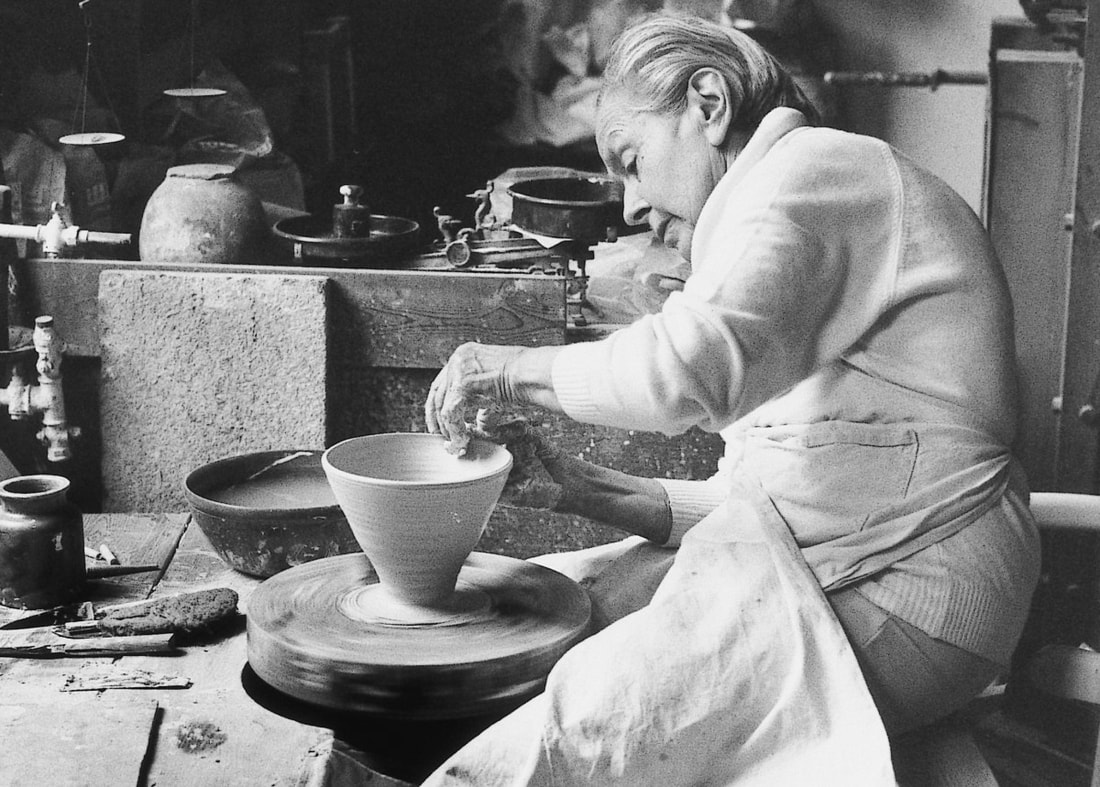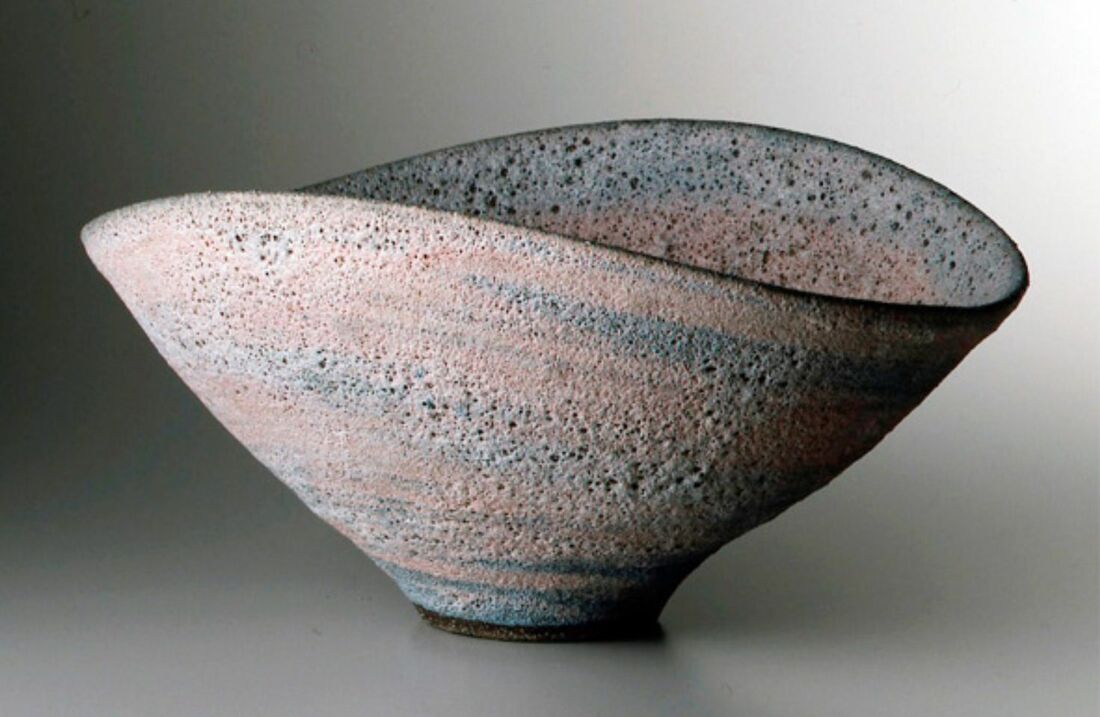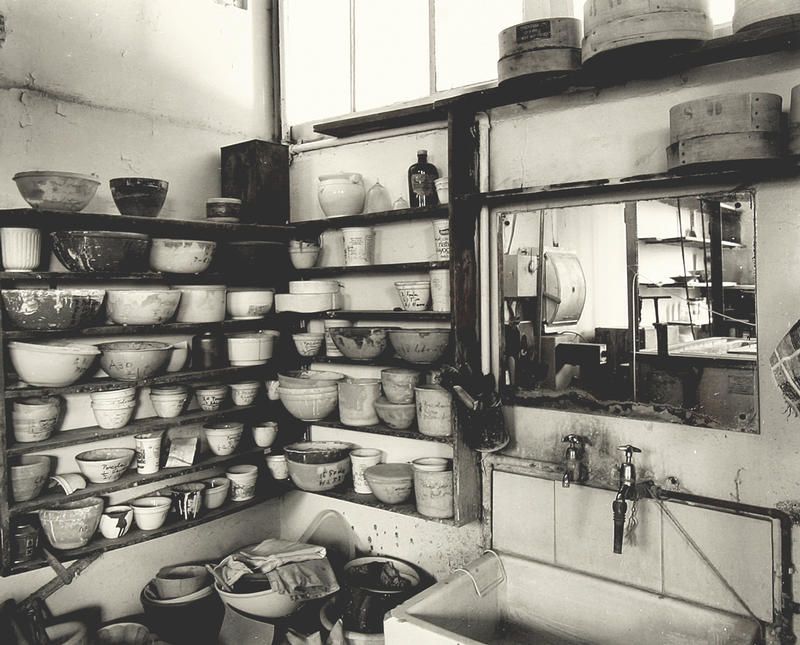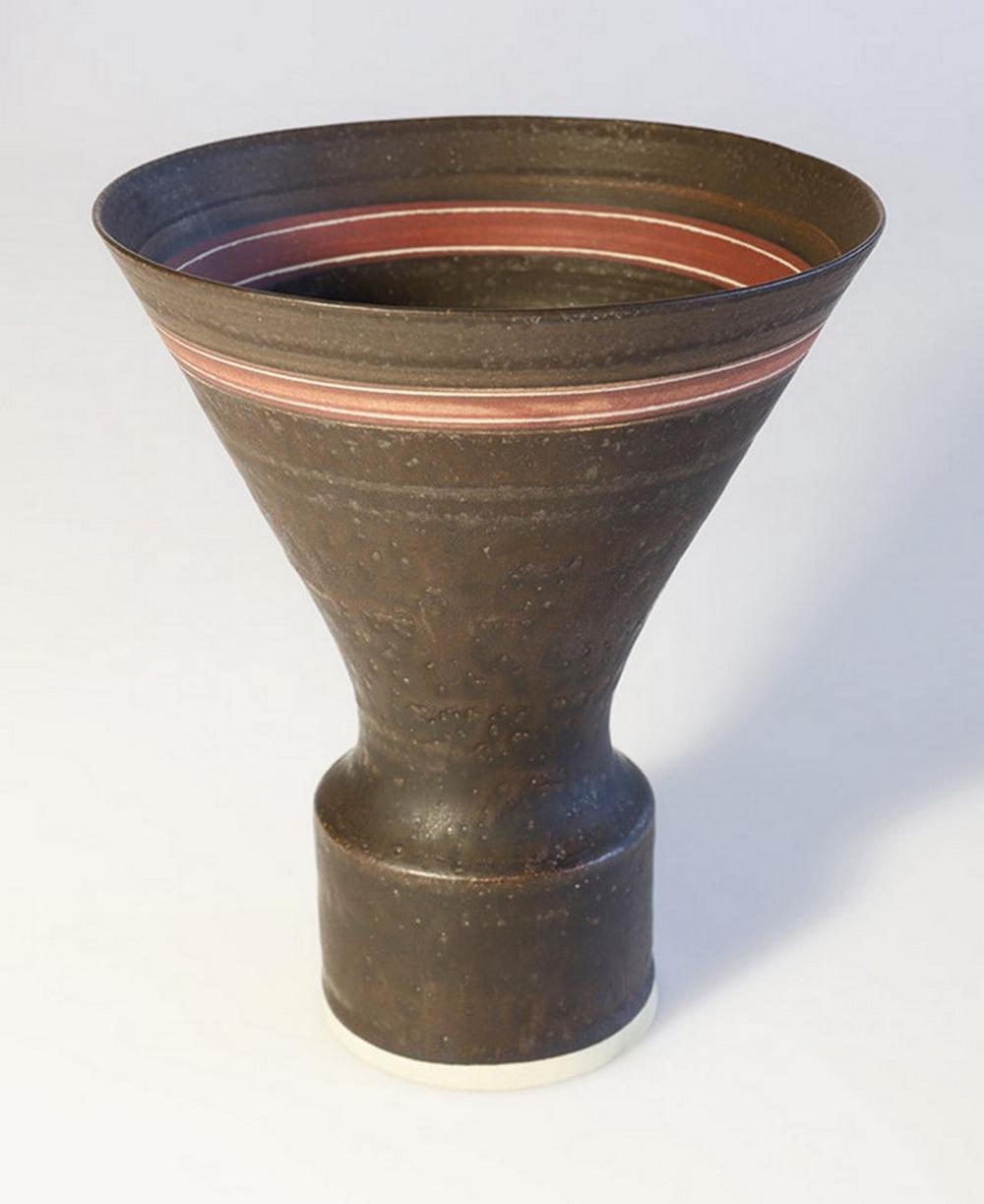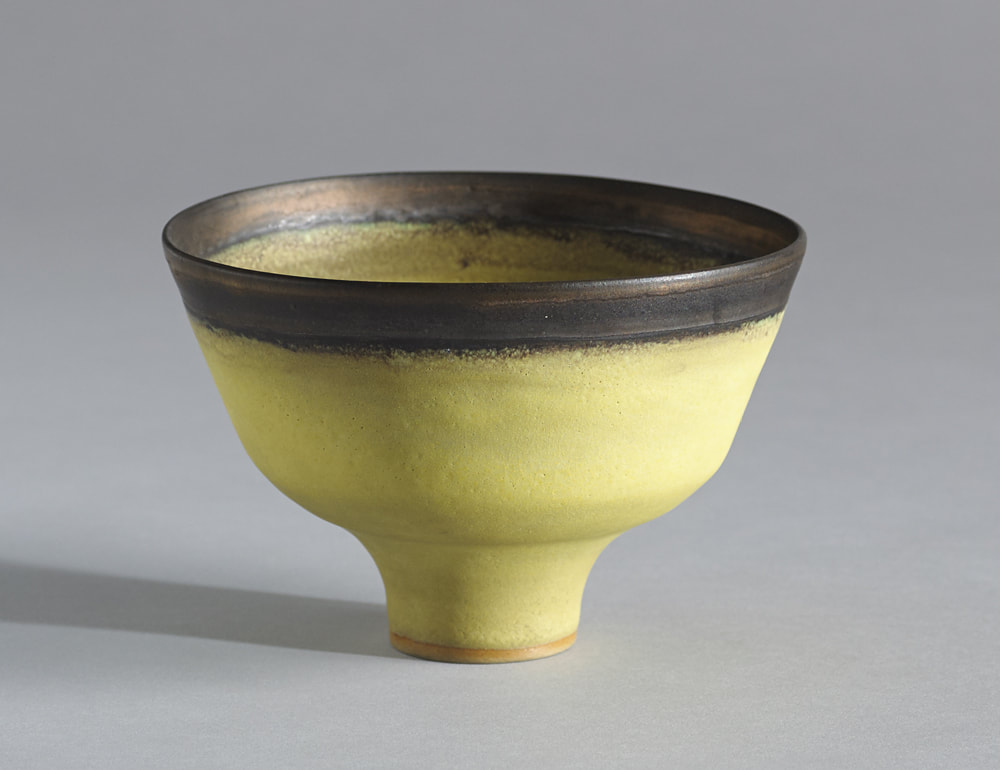Born on March 16th. Lucie Rie (1902-1995) did for studio pottery what her teacher at Vienna’s most prestigious school for design, the Kunstgewerbeschule Adolf Loos did for architecture. She helped shaping modernist pottery and bring studio ceramics to the mainstream of the Modern Movement. Her pieces were as radical as Loos’ writings, and the preference for clarity, craftsmanship, and the lack of ornament mirrored the principles Loos advocated in his iconic essay Ornament and Crime. Rie’s life and early career in Vienna couldn’t have been more privileged and successful. Her father, Benjamin Gomperz was a Jewish physician, a medical consultant to Sigmund Freud; she lived the ‘Golden Age’ of the Jewish bourgeois life as was captured so beautifully in Sefan Zweig’s memoir The World of Yesterday; and had experienced a successful career, exhibiting her pottery in the important Worlds’ Fairs of the time. But with the occupation of the Nazi in 1938, Rie was forced to fled Austria and emigrated to England, where she started the second phase of her career. Her London studio at Albion Mews had remained nearly untouched for decades and has been reconstructed at the V & A. Lets remember Lucie Rie, one of the most celebrated art potters of the 20th century.

